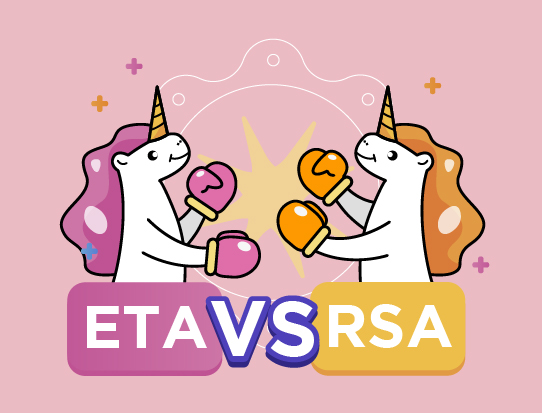When it comes to Google search ads, there are two main formats: the Expanded Text Ads (ETAs) and Responsive Search Ads (RSAs). Advertisers might wonder, is one format better than the other? If it is, then why? But before revealing which format has more advantages, let’s first establish the distinctions between the two search ads formats.
What is an ETA?
The Expanded Text Ads (ETAs) appear on Google search results. Typically, they consist of three headlines of up to 30 characters each, on top of two description lines of 90 characters each. The combination of headlines and descriptions are fixed. So in some ways, advertisers have more control over the content displayed in the search results. Bear in mind that while ETAs allow for three headlines and two description lines, the search results will only display the first two headlines and one description line copy most of the time.
What is an RSA?
Launched by Google in 2018, Responsive Search Ads or RSAs consist of up to 15 headlines and four description lines, all provided by the advertiser. Despite the additional headlines and description texts, RSA ads are not necessarily longer. In a typical Google search result, an RSA search ad will only show users a combination of two headlines and a description line. So, where does the rest of the provided text go?
Despite the similar display, RSAs work differently than ETAs. As advertisers supply a combination of 15 headlines and four description lines, Google will dynamically change the headline and description on every user search, aiming to discover the winning combination. The winning combination, in this case, is defined as the text combination that has the highest conversion rate and click-through-rate (CTR).
Even though RSAs are dynamic, advertisers can still pin specific headlines and descriptions to make sure that they will appear in any combination attempted by Google.
So, how can advertisers make the best of the RSA search ads format?
A while back, Google released recommendations on making clear distinctions between one highlight and another. Each headline should exclusively highlight one aspect of the product advertised.
For example, you can have one headline talking about the product’s user selling point, with another headline highlighting a special promotion going on. Having all 15 headlines talking about the USPs of the product ultimately defeats the purpose of the RSA. Why? Because all of the headlines repeat the same messages instead of experimenting with a combination of messages to pinpoint the right one that appeals to the audience.
RSAs are not perfect
While advertisers were quick to jump into the RSA search ads train as soon as it arrived, the format is not entirely perfect.
Advertisers like the whole premise of A/B testing the right combination of messages, but simultaneously, they desire more control over the exact messaging that appeals to their audience. This is very important for advertisers when working with strict brand guidelines and messaging rules. On the other hand, there is also limited data on how each headline and description text performs. Advertisers have the visibility of their impressions, but not necessarily on the clicks generated.
So, now that you know about both RSA and ETA formats, here’s a question for you. Will you be willing to experiment with the RSA search ads format on your next pay-per-click campaign?



